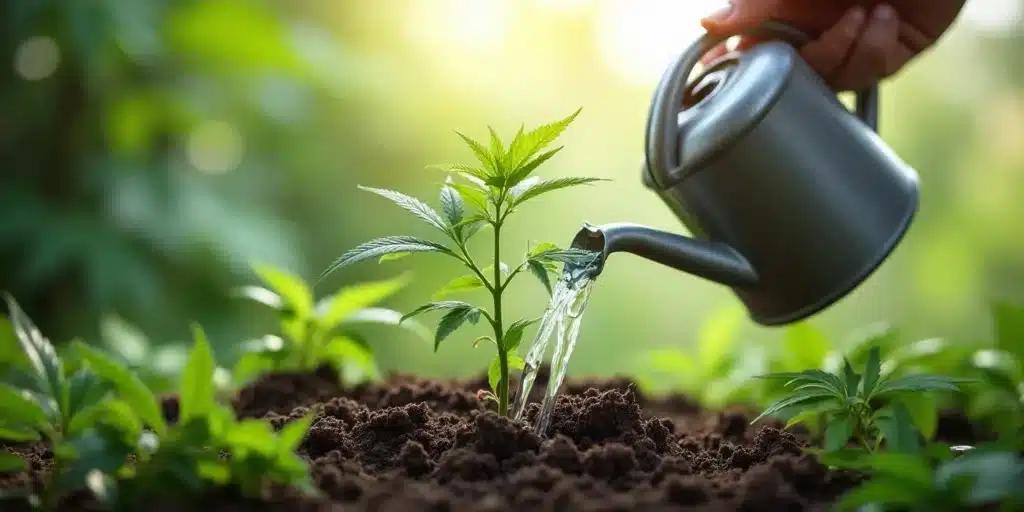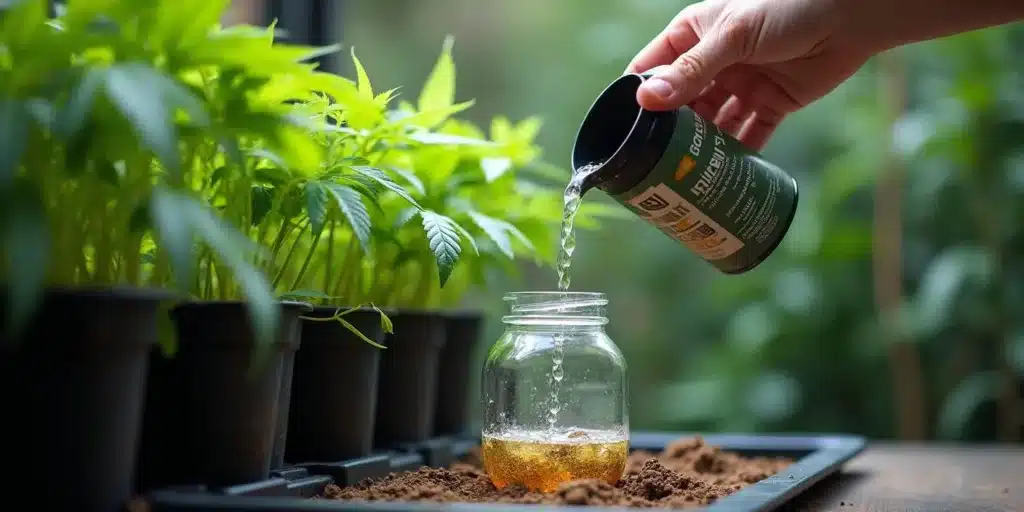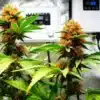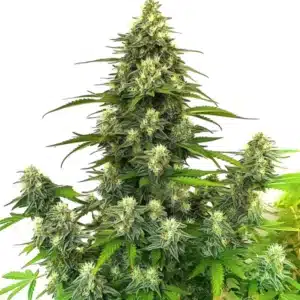
Autoflower Week 2: What to Expect and Care Tips
Your Autoflowering Plants in Week 2
This phase is full of potential as your plants start to establish themselves. You’ll notice that they begin to grow more rapidly, and the fresh leaves can create a vibrant, green canopy that signals health and vitality in your plants.
As a grower, this is the perfect time to engage with your plants and better understand their needs. Regularly assessing their environment is crucial, keeping humidity between 50-70% and maintaining temperatures from 68°F to 77°F (20°C to 25°C) fosters an ideal atmosphere. Good airflow is also indispensable, helping your plants avoid mold while promoting healthy growth. Make it a habit to check for any signs of stress or potential pests, because catching these things early can have a huge impact!
Recommended Strains
Silver Surfer Haze
|
|
THC | 20% - 25% (Medium) |
|
|
Type | Feminized |
|
|
Yield | High |
|
|
Phenotype | 20% Indica / 80% Sativa |
Super Silver Haze
|
|
THC | 22% - 24% (Medium) |
|
|
Type | Feminized |
|
|
Yield | High |
|
|
Phenotype | 10% Indica / 90% Sativa |
Nutrient Needs for Autoflower Week 2
Ah, nutrients! They are like food for your plants, and knowing how to nourish them is vital. In week 2, the key is to start with a light feeding regimen. If you’ve chosen a soil mix rich in nutrients, your plants might be just fine with what’s in there for the first few weeks. However, if your plants appear to be lacking in vigor or color, it’s smart to incorporate a diluted nutrient mix to give them a little boost.
As you navigate this stage, focus especially on nitrogen levels, as they play a pivotal role in fostering healthy leafy growth. While nitrogen is your ally, be cautious; too much can lead to nutrient burn, which can hinder growth. A good starting point is to apply about 20% of the recommended dosage and gradually adjust based on how your plants respond to the feeding.
Promos & Deals
Watering Techniques During Week 2
Let’s chat about watering, an incredibly important part of plant care! As you move into week 2, it’s essential to find that sweet spot for hydration. One helpful tip is to wait until the top inch of the soil feels dry before watering again. This practice encourages root health and prevents overwatering, which can lead to undesirable conditions like root rot.
If you notice some of the leaves curling downward or acquiring a yellow hue, this might point to overwatering. Adjust your watering routine to allow the roots the necessary breathing space. Conversely, if your plant’s leaves seem to droop, it might be a cry for help due to underwatering. Ensure you provide enough water until it drains out of the bottom of the pot to keep those roots happy!
Choosing the Right Medium
The medium you choose is pivotal to giving your autoflowers the best start in week 2! Opting for a supportive medium like organic soil or coco coir can significantly change your plants’ growing environment. Organic soil is often abundant in natural nutrients and contributes to a thriving microbial community. On the flip side, coco coir has excellent moisture retention properties, promoting healthy root development by allowing the right amount of aeration.
Another factor to consider is the size of the pots. While larger pots might seem appealing, autoflowering plants typically do well in smaller containers, like a 3-gallon pot. This size allows them to flourish without the risk of overwatering. Remember to keep an eye on them; as they grow, you may need to transplant them into a larger pot if they start to outgrow their initial home.

Pest Management in the Early Stages
Pest management isn’t something to put off, starting early can make all the difference! During week 2, it’s wise to regularly inspect your plants for any signs of pests or anomalies on the leaves. Common culprits to look out for include aphids, spider mites, and whiteflies. Being vigilant will help ensure your plants thrive without unnecessary stress.
Good hygiene practices can greatly aid in keeping pests at bay. Regular cleaning of your grow area is key, and don’t forget to disinfect all tools and pots. If you’re feeling adventurous, consider introducing beneficial insects like ladybugs to maintain a natural balance, as they can effectively manage pest populations overlapping with your stunning green plants.
Preventing Diseases
Keeping diseases at bay is another layer of protection for your precious plants! Fungal issues can thrive in humid conditions, so it’s essential to stay on top of humidity levels. Creating airflow with a fan not only helps alleviate humidity but also strengthens your plants’ stems by simulating natural breezes. If diseases are still a concern, consider applying a preventative fungicide, but always stick to the recommended guidelines to avoid damage.
Additionally, avoid overcrowding your plants! Ensuring that leaves don’t overlap will minimize the risk of disease spread. Adequate spacing between plants promotes airflow, which, in turn, reduces the chances of fungal issues arising. Engage with your plants, providing them the best environment possible for their growth.
Strain Examples:
Hindu Kush Autoflower – Known for its relaxing effects and earthy flavor. This strain can soothe both body and mind, creating a balanced experience for those looking to unwind.
Blueberry Autoflower – Renowned for its sweet taste and balanced high. This delicious strain delights the palate while providing a pleasant, mellow experience.
Super Lemon Haze Autoflower – Offers a zesty flavor profile with uplifting effects. Perfect for boosting your mood while delivering a citrusy delight!

Harvesting Expectations
As you venture through week 2, balancing care today with thoughts of the future is essential. While it’s too early to dive deep into harvesting, having an understanding of the growth timeline can ease your mind. Generally, autoflowering strains flower faster compared to photoperiod strains, usually reaching maturity and harvest readiness in about 8-10 weeks from seed.
Keep an eye on how your plants develop during this time; you’ll gain valuable insights into when to anticipate harvest time. Nurturing your plants well during this stage will often lead to fruitful rewards by the end of their growth cycle, with lush buds waiting for the final moments before harvest.
Visual Signs of Maturity
As the days pass in week 2, your plants will begin to form nodes, which are vital for budding later in the growth cycle. Witnessing this structure take shape is incredibly exciting! Pay attention to the overall growth patterns, as this will provide clues about the health and vigor of your plants.
Monitoring the shape and size of the developing buds in the upcoming weeks will be key. This close observation allows you to make necessary adjustments in your care routine, like fine-tuning feeding and watering schedules, ensuring that your plants respond positively to their growing environment.

FAQs
What should I do if my plant’s leaves are turning yellow?
Yellowing leaves can signal various issues, including nutrient deficiencies, overwatering, or insufficient light exposure. Inspect your watering habits and confirm that your soil has proper drainage. If you suspect a nutrient issue, consider introducing a gentle nutrient feed tailored to the needs of your plants. Don’t overlook pest inspections, as they can also contribute to leaf discoloration.
How can I tell if I am overwatering my autoflower plant?
Common signs of overwatering include drooping leaves, yellowing foliage, and a scooped or wilting appearance. The soil might feel saturated or mushy to the touch. To avoid this pitfall, wait for the top inch of soil to dry out before giving additional water, and ensure the pot has adequate drainage to keep water from collecting at the bottom.
What is the best light schedule for autoflowering plants?
For optimal growth, autoflowering plants often thrive on a light schedule of 18 hours on and 6 hours off throughout their vegetative and flowering stages. Some growers experiment with a 20/4 schedule to encourage even more vigorous growth. Just remember, consistent and adequate lighting is your number one priority to ensure happy, healthy plants!
Should I use a fan for air circulation in my grow area?
Absolutely! A fan aids in providing essential air circulation, which helps reduce humidity and prevent mold development. Moreover, gentle breezes can strengthen stems and build resilience in your plants. Aim to position the fan to oscillate around the plants, ensuring it doesn’t blast directly on them for prolonged periods, which could cause undue stress.
Is it necessary to use nutrients in week 2?
In most cases, your autoflowering plants won’t need additional nutrients if you’re using high-quality soil to start. If you observe signs of deficiency, such as stunted growth or discolored leaves, then it might be time to introduce a diluted nutrient solution tailored to their specific needs. Always observe how your plants respond and adjust accordingly for the best results.



















